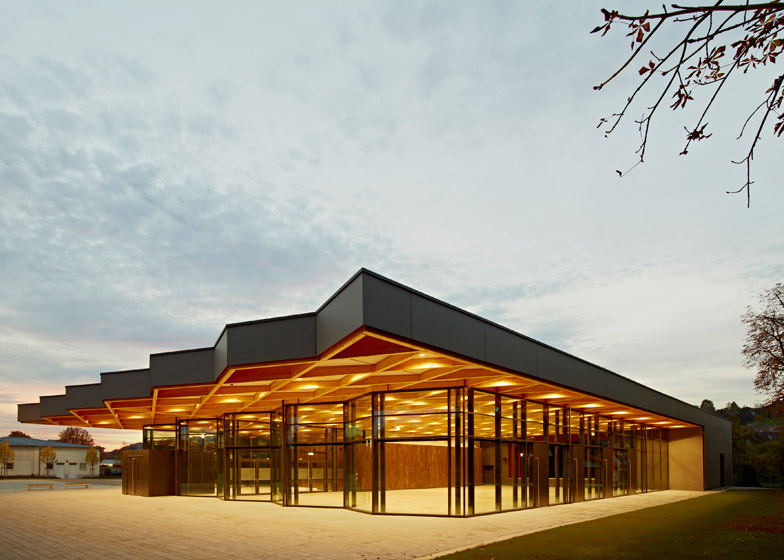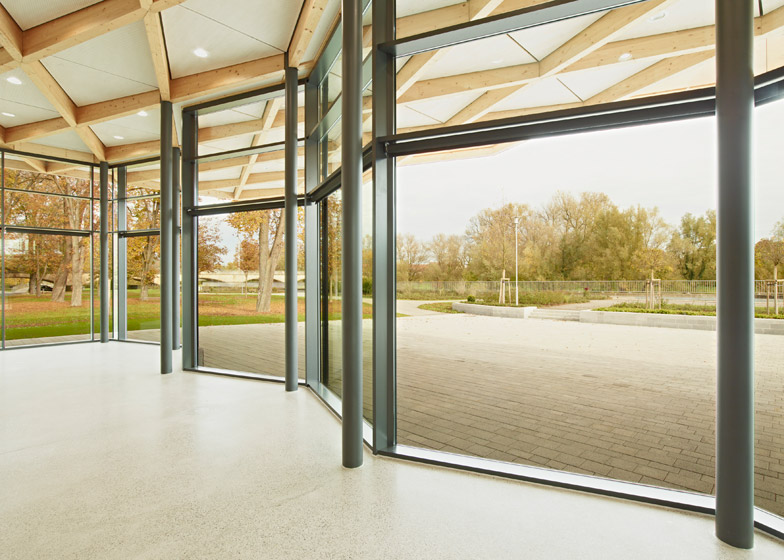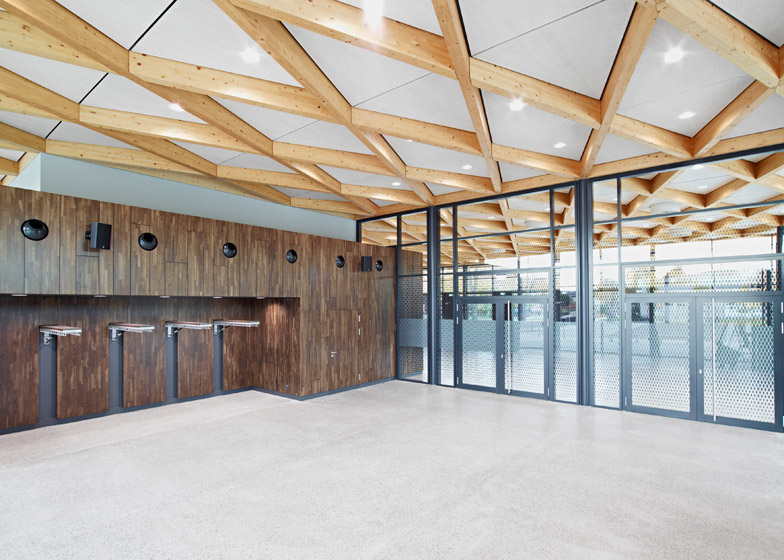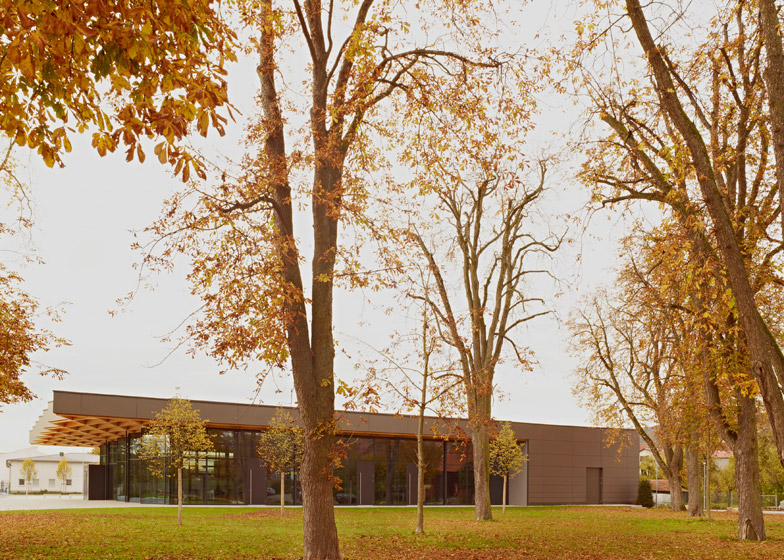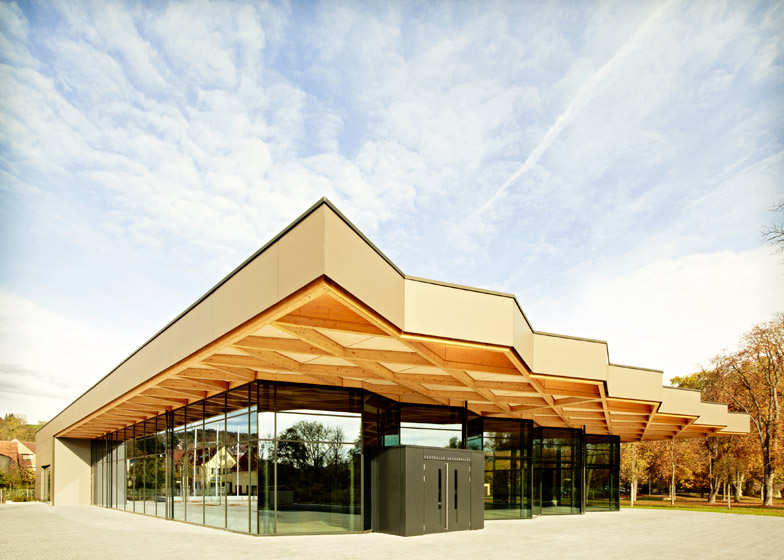A latticed canopy overhangs the zigzagging glass facade of this riverside community hall near Stuttgart by German studio Ackermann + Raff (+ slideshow).
The Neckartailfingen Festival Hall was designed by Stuttgart-based Ackermann + Raff for a site surrounded by trees on the bank of the River Neckar.
The architects wanted to integrate the surrounding landscape into the design of the riverside community venue, which contains two multi-purpose events spaces.
One way they did this was by creating a zigzagging wooden canopy designed to mimic the criss-crossing of tree branches.
"The motives of the design are deduced by the surrounding environment and nature," architect Julia Raff told Dezeen. "The sloped ceiling panels within the diamond fields create a lively ceiling scape, similar to the leaf canopy of the surrounding trees."
The diamond-shaped grid echoes the branches with interlocking spruce trusses. Connected using discreet braces, the girders create a canopy over the entrance toward the river.
White panels fill the spaces between the grid, but a series of apertures above the entrance frame views of the sky.
The glazed concertina facade wraps around the north, east and south elevations, inviting passersby to peek in at the activities that might take place inside, varying from weddings to music performances and community events.
These glass elevations also offer those inside panoramic views of the surroundings and flood the interior with natural light.
The plan of the building is divided up into two – the transparent box at the front serves as the main hall, while a smaller less-visible section at the rear houses a second smaller hall, as well as back-of-house facilities and offices.
A charcoal-coloured vestibule leads visitors from the entrance to the foyer, which is lined with vertical wooden boards.
These stained oak boards resonate with the bark of the nearby trees. They also conceal levered armatures that fold up to reveal coat hangers.
Gravel from the River Neckar was added to the polished screed flooring, creating one final link to the waterside setting.
Photography is by Thomas Hermann

